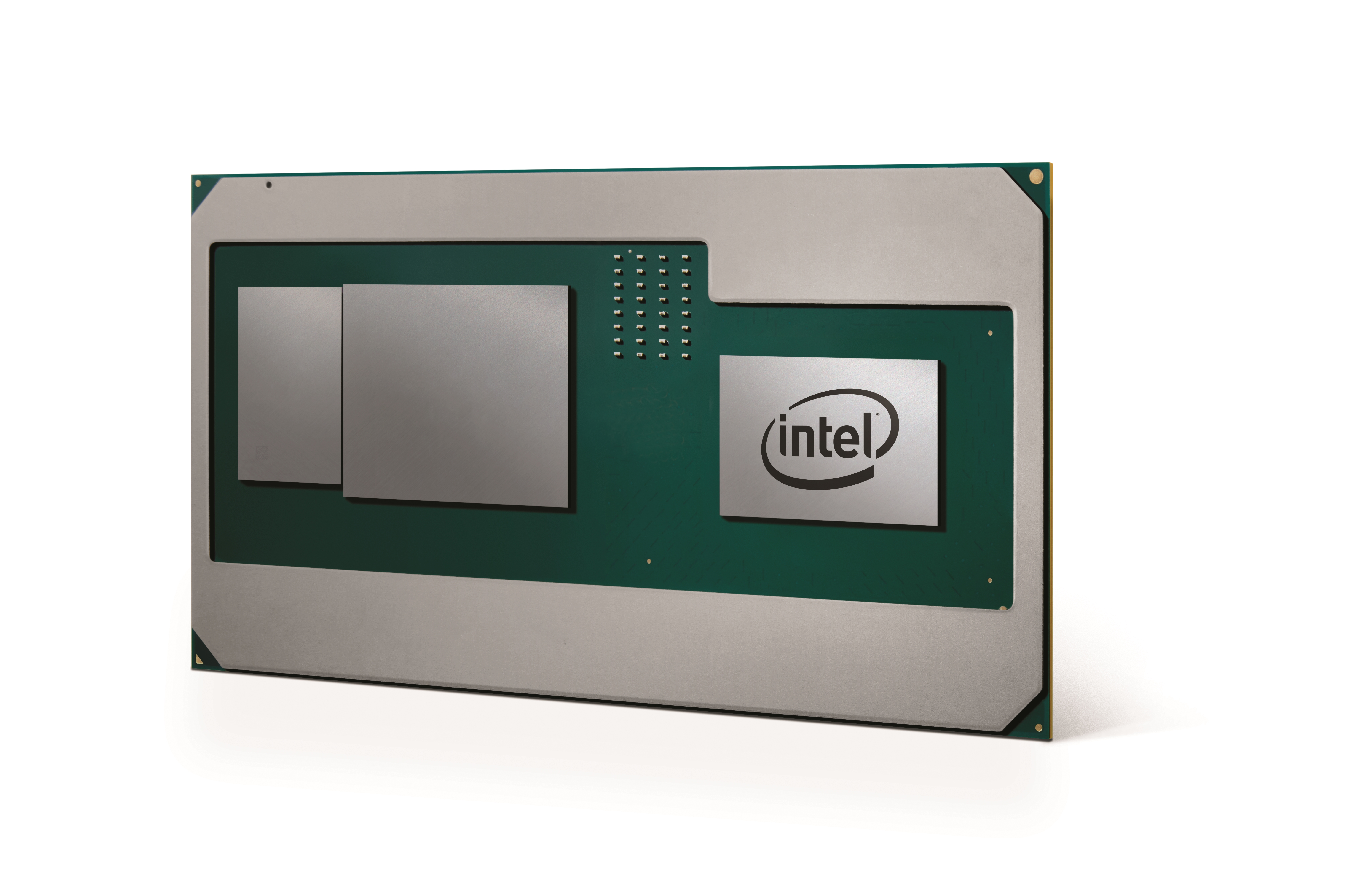 INFRA
INFRA
 INFRA
INFRA
 INFRA
INFRA
Computer chip makers Intel Corp. and Advanced Micro Devices Inc. have been intense rivals ever since they were each founded in the late 1960s in the earliest days of Silicon Valley, but now the two companies are teaming up to take on a much younger threat: Nvidia Corp.
Intel and AMD announced today that they have partnered to create a new ultrathin laptop chip unit that combines Intel’s 8th Gen Intel Core central processing unit with a custom-designed AMD Radeon integrated graphics processing unit or GPU chip. According to Intel, the new chip unit has a 50 percent smaller silicon footprint than previous designs, allowing laptops to achieve desktop-grade performance and graphics with an extremely thin and portable form factor.
The new chip design uses an Embedded Multi-Die Interconnect Bridge, or EMIB, to rapidly pass signals across the very short distances between the CPU, GPU and dedicated GDDR5 graphics memory. Intel calls the EMIB the heart of the chip unit design, and the company says that it eliminates height impact and greatly reduces manufacturing and design complexities. Intel said it plans to release unique software drivers to boost coordination among the three elements in the new chip units, which will also allow system designers to adjust power ratios and workloads between the components.
Although Intel and AMD are teaming up for the new laptop chip, the two companies still consider each other to be rivals. Chris Walker, vice president of the Client Computing Group and general manager of the Mobile Client Platform at Intel, said that the new joint project between Intel and AMD is “a great example of how we can compete and work together, ultimately delivering innovation that is good for consumers.” The two companies had a testy partnership decades earlier, when AMD made chips compatible with Intel’s CPUs when the latter were in short supply.
“Our collaboration with Intel expands the installed base for AMD Radeon GPUs and brings to market a differentiated solution for high-performance graphics,” added Scott Herkelman, vice president and general manager of AMD Radeon Technologies Group. “Together we are offering gamers and content creators the opportunity to have a thinner-and-lighter PC capable of delivering discrete performance-tier graphics experiences in AAA games and content creation applications. This new semi-custom GPU puts the performance and capabilities of Radeon graphics into the hands of an expanded set of enthusiasts who want the best visual experience possible.”
The new partnership is almost certainly a response to the growing threat posed by Nvidia, whose graphics processors are now used for everything from high-end PC gaming to cryptocurrency processing to deep learning neural networks and more. Over the last few years, Nvidia’s earnings have skyrocketed, and the company has posted better-than-expected earnings for nine straight quarters in a row. Nvidia also produces its own integrated chips for small form factor notebooks, as well as high-powered GPUs designed for portable workstations and gaming laptops.
“This joint project to create a lower-power gaming chip is fascinating and shows just how serious Intel is in bringing innovation to the space,” said Patrick Moorhead, president and principal analyst at Moor Insights & Strategy. “If successful, Intel participates in the discrete graphics revenue for the first time and AMD gets its Radeon graphics into high-end gaming notebooks.”
You can watch a video promo showing how the new chip unit is put together below:
THANK YOU